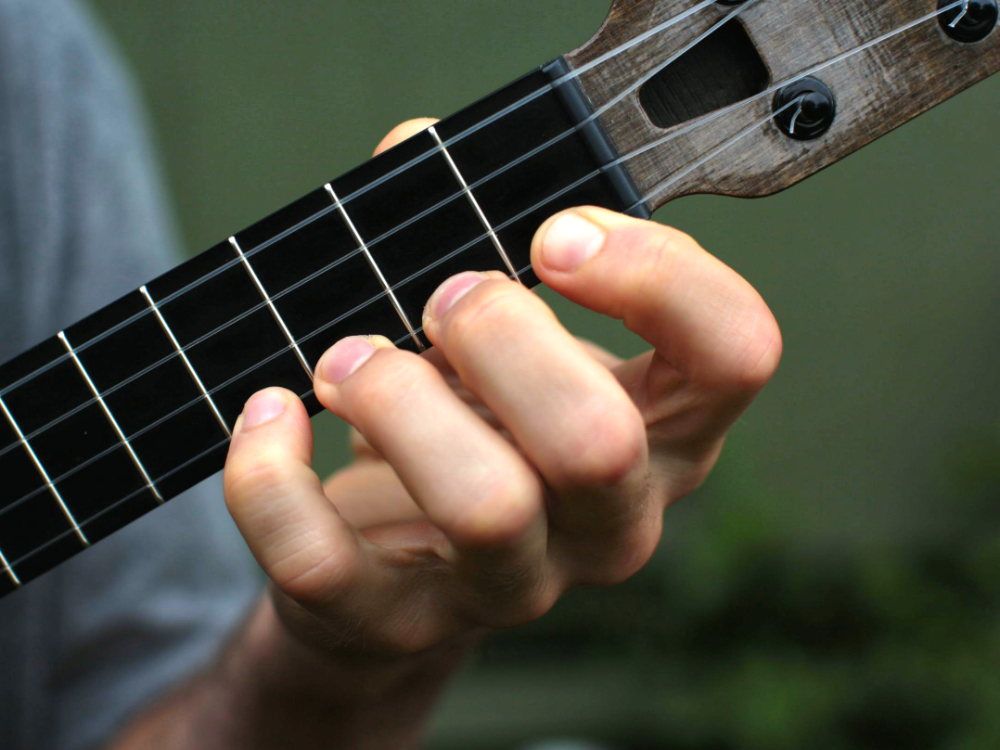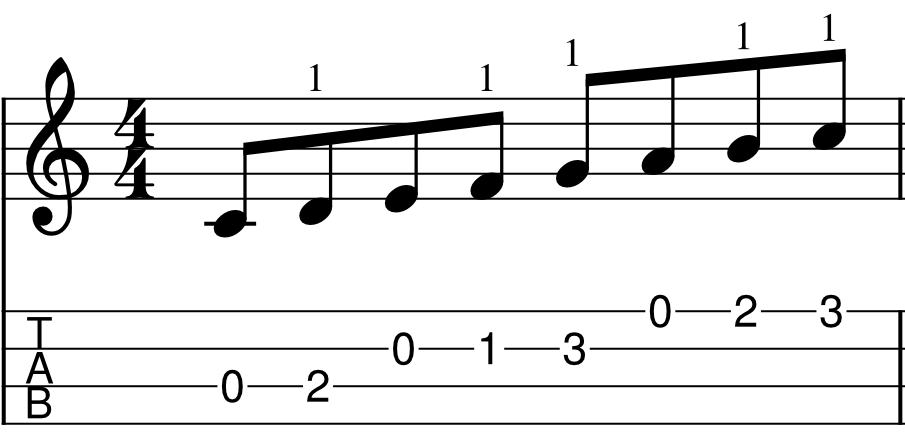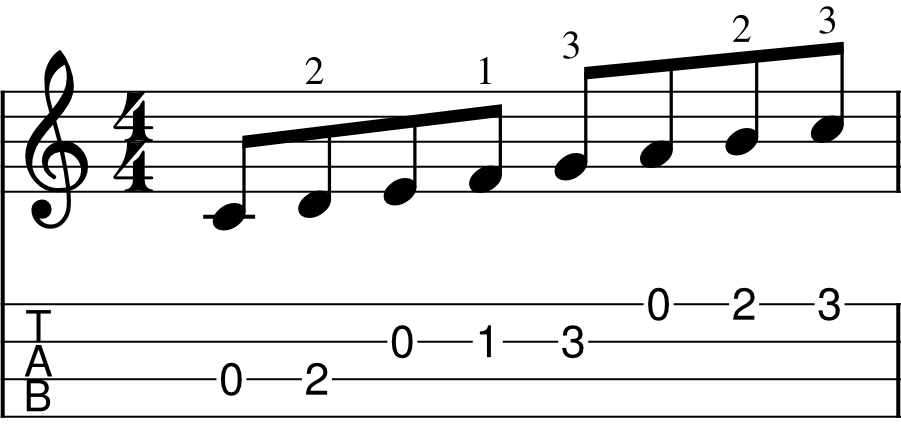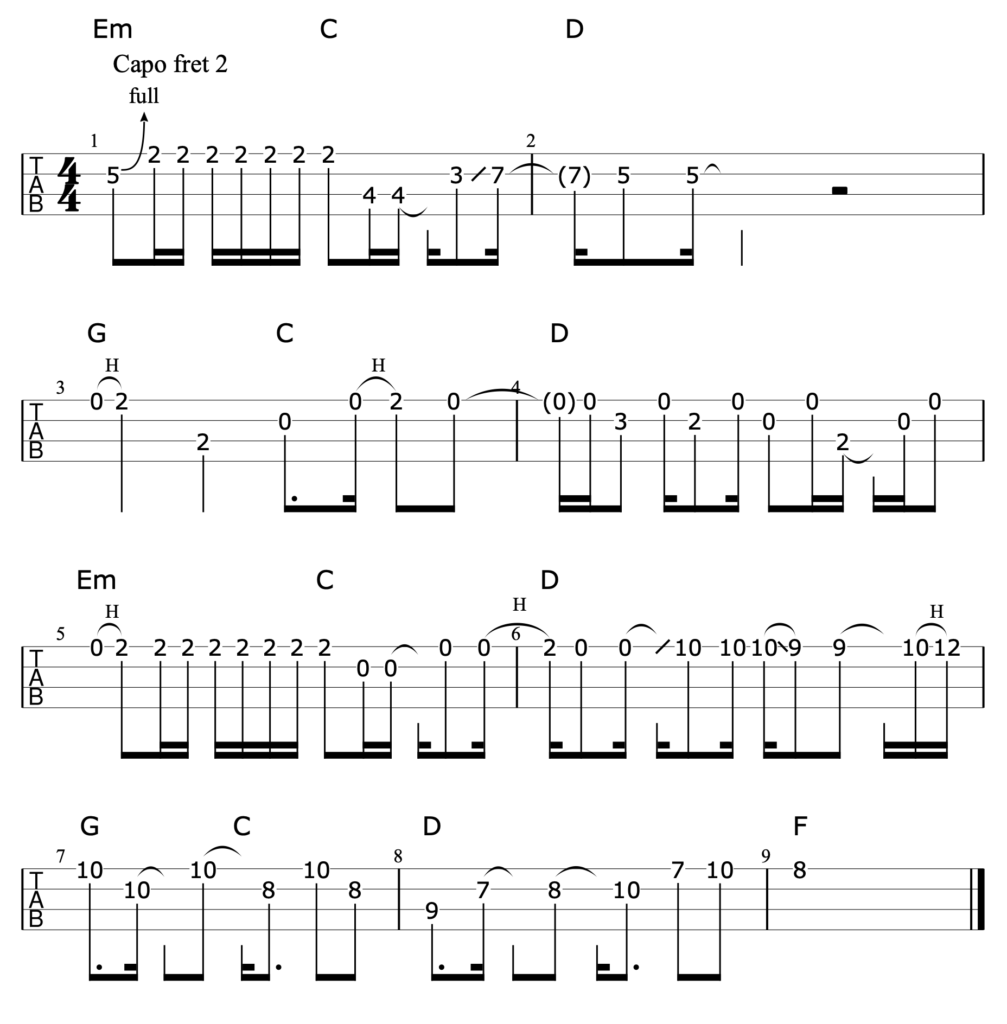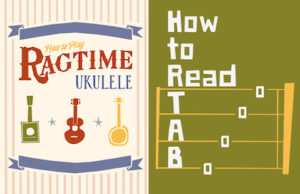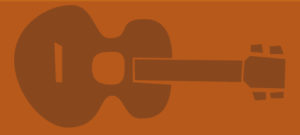Tracklist
Dani Joy & Daniel Ho – Strange World
UKEBA SQUAD – JAMBRET
Laura Currie – Heaven Knows I’m Miserable Now
Rod Wave x Einer Bankz – Heartbreak Hotel
Noah Wisch – Against the Sky
Winchester 7 & the Runners – When the World Stops Spinning
Blue Dean Carcione – Blues Run The Game
Mestre Robson Miguel – Viagem
KUBURAN – SAREDONA
Yohanna Liang – Soulmate
BoJack Horseman Medley (Tab)
After bouncing off BoJack a couple of times, I finally started watching it in earnest after I was told to watch this fantastic bit with K Flay’s Blood in the Cut riff. After that it rapidly became one of my favourite shows of all time.
As well as being hilarious and insightful, it also uses some great music. Both in terms of licensed music and original music from Jesse Novak (who I’ve covered before with his People Person’s Paper People jingle from The Office). So I had to put together a medley of my favourite songs from the show (that RBW pretended to like proving himself to be a Hollywoob phoney).
For most of the medley I’m either using strums (with a few picked notes mingled in) or thumb and two finger picking.
The song that works best on ukulele is the outstanding I Will Always Think of You. Which is such a dead-on pastiche I had to double check it wasn’t a long lost Cole Porter song.
The trickiest to pull off is Back in the 90s. That includes some quick Cotton picking i.e. the thumb alternates between the g- and C-strings with the index and middle fingers playing the melody on the E- and A-strings respectively.
The full tracklist:
A Horse with No Name (America)/Special Feeling/Avant Gardener (Courtney Barnett)/I Just Met My Perfect Match/Generic 90s Grunge Song/Mr Peanutbutter’s House/Blood in the Cut (K.Flay)/I Will Always Think of You/Back in the 90s/Stars (Nina Simone)/Boxer vs. Raptor
Links
Buy the BoJack Horseman soundtrack
More TV theme tabs and chords
Uke Hunt on Patreon
Today is a guest post from Brad of Live ‘Ukulele and is a modified excerpt from his new ebook, Left Hand Technique For ‘Ukulele. If you enjoy the post, I highly recommend checking it out. It’s packed with useful tips.
When you’re jamming on your ‘ukulele, there are certain conventions you can follow to make playing easier on your left hand. The most universal of these is probably the 1234 rule.
Following this guideline (though all rules are meant to be broken) helps keep your fingers lined up efficiently and out of each other’s way.
This is useful when playing chords, but is often more overlooked during single-note melody playing. So we’ll hone in on that side of things in this lesson.
1234: a First Look
The rule is simple:
If you are playing inside the first four frets, you can often use corresponding fingers to play each fret:
- 1st finger on 1st fret
- 2nd finger on 2nd fret
- 3rd finger on 3rd fret
- 4th finger on 4th fret
A great way to practice this fingering convention is with a (cleverly-named) 1234 exercise. It’s as simple as it sounds.
On the G-string, play the 1st fret with your first finger. Then play the 2nd fret with your second finger. Then play the 3rd fret with your third finger. Lastly, play the 4th fret with your fourth finger.
Once 1234 is complete on one string, do it again on each of the next three strings so that you end on the 4th fret, A-string.
Practice slowly until you can play it perfectly. (There’s no point, in my opinion, in muddling your way through this at a faster tempo. You want to teach your fingers exactly where home is so that when it’s time to think about other things, your fingers can slip into autopilot mode.)
Here’s the whole thing in TAB:
Play the pattern in reverse once it’s easy to do normally. (Don’t rush; make it perfect!)
The 1234 Mindset – Why It Works
Oftentimes I teach students an open position C major scale and they play it using only one finger, like this (note the fingering numbers above the notation):
I understand why this happens: it’s easier!
At least at first, eliminating all other muscle movements allows them to focus completely on pressing the right frets.
This is usually fine at first as they get the pattern under their fingers. But, while it’s an initial struggle, adding additional fingers for each fret allows you to play much more efficiently down the road.
Here’s what the same scale looks like played following a 1234 convention (all that changes is the fingering):
Try playing it both ways and notice how your whole hand moves to facilitate each. In the first example using a single finger, your hand moves as if you’re playing through three different positions!
This extra movement will really slow you down when playing at a quick tempo. The goal of playing ‘ukulele should be to make it EASY! This means making zero unnecessary movements.
Many times we get caught up in just getting the job done, but taking a moment to assess your technique as you go will pay off many times over as you improve.
Using the Rule
To implement the 1234 fingering convention in your own musical piece, you just have to force yourself to do it. Take any single-note melody that lives within the first four fretsof your ‘ukulele and play it with the rule – no exceptions.
You might find that after spending some time with it, some notes would benefit from breaking out of the 1234 fingering. That’s fine in certain situations, but I think you’ll find that more often than not that the 1234 convention will treat you right.
Because we can, let’s look at how this works with the famous melody of Santana’s “Europa.”
It’s simple, but the kind of thing a lot of people would jump into incorrectly without knowing better.
One person might finger it like this (again, fingerings above the notation):
Others might do it like this:
In both cases, you’re getting hosed on the last note. You have to shift your whole hand down to play the first fret – wasted movement.
This is what it would look like in a perfect world:
By following the 1234 rule, the last note is given its respective space in the future of the phrase and your fingers can do all the work instead of needing to move your hand.
Fingering is all about looking ahead and knowing where you’re going to end up. For instance, if the last note was on the 5th fret, you would could start with your first finger on the 2nd fret and it would line you up to reach that note (2345).
So next time you catch yourself stuck in the first four frets by a poorly executed fingering order, apply the 1234 convention and start fresh.
Learn tons more about left hand fretting technique (and how to expand upon the 1234 rule) in my detailed guide, Left Hand Technique For ‘Ukulele.
The Rembrandts – I’ll Be There for You (Chords)
Today’s post is a tribute to songwriter Allee Willis who passed away in December. She wrote some massive hits including Boogie Wonderland, What Have I Done to Deserve This? and, most impressively of all, Richard Simmons’s Reach. If you couldn’t tell from the last one, she was a lover of the kitsch and curated her own Allee Willis Museum of Kitsch. But her most famous song is the Friends theme I’ll Be There for You.
For my arrangement you’ll need a capo on the second fret for the chords and the twiddly bits.
Suggested Strumming Pattern
There are a couple of strums that work well as a main strum. If you’re comfortable with chnks use this one:
d – x u – u d u
Or you can use this one:
d – d u – u d –
Better still, vary it up and switch between them.
Intro: Just one down-strum per bar.
Verse: Two main strums on all the Gs and one on everything else. On the final D you can do the main strum once then do down-up four times. And, of course, you can just do one down-strum on the F then do the claps.
Chorus: Main strum once on the G-C then twice on the D. On the last line do two on the F. In the first and third choruses you go straight into the G at the start of verse two/the outro. The second chorus you play two main strums on the G before heading into the middle.
Middle: Go with the non-chnk main strum. Four times each on C and E. Twice each on Am and C. Once each on F, Am and D. Then single down-strums on C and D before returning to the main strum on Em.
Solo and outro: Same as the chorus: one main on the first two chords and two on the D.
Bridge: Same as the second half of the verse.
Twiddly Bits
The intro is iconic and fits nicely on the uke.
The solo doesn’t fit quite so nicely. This version is heavily adapted to fit on the uke with some octave shifting. But it’s a great solo. It perfectly takes elements of the song’s melody, elevates them and pushes the song along.
And here’s the little lick similar to the intro that ends the song.
Links
Buy it on Amazon
More TV theme tabs and chords
Uke Hunt Patreon
Tracklist
Jake Shimabukuro – When The Masks Come Down
Tricity Vogue & All Girl Swing Band – Rasputin
EmiSunshine – The Ghost of Hank Williams
Tobias Elof – Mango Walk
Vanessa Ding – Follower
Paul Hemmings – Scrapple From The Apple
Blue Dean Carcione & Espada – Clay Pigeons
GUS and FIN – Let's Be Natural
Herman Vandecauter – Baile Cubano
chloe moriondo – kindergarten
Toss a Coin to Your Witcher (Tab)
Following up on Brave Sir Robin with another medieval parody. This time from the TV show The Witcher. I haven’t got around to watching the show yet, but Toss a Coin to Your Witcher has been impossible to avoid.
The original is in Am so it transfers neatly to the ukulele in the original key. There’s nothing massively difficult in the tune. But the hardest parts are the jumps up the neck. Particularly the one in bar 16. So I’ve arranged it with open strings in the previous two notes so you move up the neck early in preparation.
Links
Buy it on Amazon
More theme tune tabs and chords
Uke Hunt on Patreon
When I started Uke Hunt back in 2007, the ukulele scene was tiny and largely consisted of weirdos like myself. My goal in starting the blog was to push myself to improve my own playing and pass everything I’d learned onto others. Since then, the ukulele world has boomed in a way that I didn’t think was possible. But still the biggest thrill for me is seeing someone playing an arrangement I put together.
These days there’s no shortage of people with nice hair and white teeth teaching you how to play a C chord. So in the last few years I – being a bald, yellow-toothed goon – have been focusing on more ambitious projects to help ukers play tunes they’re proud of and give them a sense of accomplishment.
To keep that up, I’ve started a Patreon. As well as the satisfaction of supporting the site, you’ll get ebooks, lessons, previews and exclusive tabs.
I’m massively grateful to everyone who supports me and the site. And I’ve got lots of ideas for the site and the Patreon to make sure that everyone who donates gets good value for money.
The Rewards
Everyone who joins my Patreon gets downloads of two ebooks: How to Read Ukulele Tab and Ragtime Ukulele.
How to Read Ukulele Tab is a revised, updated and prettified version of my tab reading series of posts. It should cover all the squiggles you’re likely to see in tabs.
Ragtime Ukulele is a long-lost ebook that I’ve resurrected. It includes advanced-level tabs for seven ragtime tunes including 12th Street Rag, Tiger Rag and Maple Leaf Rag. It also comes with a pdf file with a brief history of ragtime, all the elements you need to create your own ragtime tunes, and performance notes for each piece.
The first tab for all patrons is also up: What Shall We Do with a Drunken Sailor?.
Soprano Tier
Rate: $3 per month
– eBook downloads: How to Read Ukulele Tab and Ragtime Ukulele.
– Early access tabs and lessons.
– Make requests and vote on future posts.
Concert Tier
Rate: $5 per month
– Everything in the soprano tier.
– Monthly exclusive tab.
Tenor Tier
Rate: $10 per month
– Everything in the previous tiers.
– Personal help once a month: if you’re struggling with one of my tabs, send me a video or ask questions and I’ll help you out.
– Inclusion in monthly Patron thank you post.
– 50% discount on my ebooks.
Neil Innes – Brave Sir Robin (Chords)
This post is a little tribute to two sad deaths over the New Year period: official Python Terry Jones and honorary Python Neil Innes.
As well as writing a wealth of music for the Pythons, Neil Innes worked on the Beatles’ Magical Mystery Tour, invented the mock-rockumentary with The Rutles, had massive hits with I’m the Urban Spaceman and How Sweet to be an Idiot, and was a keen uker.
Many of his parodies were understated (Let’s be Natural could have passed for a Beatles outtake). But “understated” is not a word I’d use for Brave Sir Robin which Innes performed in The Holy Grail and wrote with Eric Idle.
I’m using the chords from the source himself and tidying them up a bit and adding the intro from the Spamalot version. I’d suggest playing the B7 the no hassle way (i.e. 4320) which makes a much easier transition from and to Em.
Suggested Strumming Pattern
Really simple strumming. You can play just one strum per chord. Although you want might to do two when a chord lasts a whole bar.
Twiddly Bits
Brave Sir Robin Accompaniment Tab
The accompaniment for the song fits very nicely onto uke. My version (at the top of the video) starts with the intro to the Spamalot version, it then moves into very sparse accompaniment before sticking very closely to the melody.
Brave Sir Robin Melody Tab
Here’s a tab of the melody. Which did need a bit of adjustment for ukulele. I’d recommend using alternate picking or using a pick as the notes are speedy.
Links
Buy the Spamalot version
NeilInnes.media
More UK tabs and chords
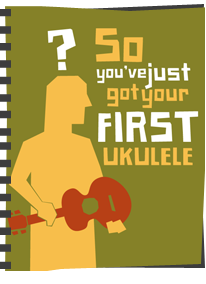 When I got my first ukulele, I was completely clueless. This was in those dark, long forgotten days before the internet had been discovered. I didn’t even realise that the strings weren’t supposed to go thickest to thinnest and restrung it.
When I got my first ukulele, I was completely clueless. This was in those dark, long forgotten days before the internet had been discovered. I didn’t even realise that the strings weren’t supposed to go thickest to thinnest and restrung it.
But you can save yourself from the social disgrace I experienced. I’ve put together a free mini-ebook covering the basics that every first time uke owner needs to know. Here’s what it contains:
Five Things to Know
Five Chords to Learn
Five Patterns to Strum
Five Songs to Play
Five Websites to Visit
Five Things to Get Free
Five Things to Buy
Five Videos to Watch
Five YouTube Channels to Subscribe to
You can download it free by clicking here:
So You Just Got Your First Ukulele (PDF)
And get playing by following the beginner ukulele lessons.
If you’re not new to ukulele but know someone who is feel free to pass it along. It has a Creative Commons license so distribute it as you wish.
Merry Christmas, Chanukah Sameach, Io Saturnalia, Feliz Natal and Happy Holidays! (If you’re into that kind of thing.)
That’s it from me for this year (other than the ebook for new ukers). I’ll be back at the end of January 2020 (year of the Hawaiian D7).
If you’re after some Christmas music and you’re as Spotify user here’s my Christmas Ukulele playlist. Or, if you’re sick of Christmas music, my playlist of ukulele selections from 2019.
If you can’t stand to be without a steady stream of uke, I’ll be posting seven second ukulele lessons on Instagram and bits and pieces on Twitter.
